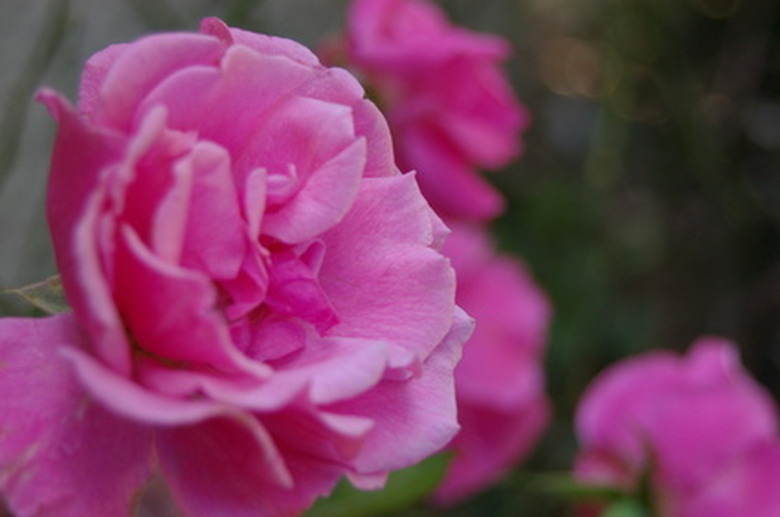How Are Roses Pollinated?
All roses must be pollinated in order to produce fruit and seeds, although they can also be propagated from stem cuttings. Pollination involves the movement of pollen from one flower to the next, or between the sexual organs of the same flower. Vectors for moving pollen include wind, birds and insects. Gardeners can also pollinate roses by hand, with the proper tools and timing.
Insect Pollination
Bees and butterflies are the primary insect pollinators for many plants, including roses. As a bee takes nectar from a flower, pollen sticks to its legs and body hair. When it moves to the next flower, some of the pollen rubs off and sticks to the female sex organ of the rose, pollinating it. A butterfly has a long proboscis that probes for nectar. As a butterfly climbs through a flower, it collects pollen on its legs and wings, transferring it when it flits to the next flower. Butterflies and bees are most attracted to yellow, fragrant roses.
- All roses must be pollinated in order to produce fruit and seeds, although they can also be propagated from stem cuttings.
- As a butterfly climbs through a flower, it collects pollen on its legs and wings, transferring it when it flits to the next flower.
Bird Pollination
Birds are most attracted to red and orange roses because they see these colors best. Hummingbirds in particular are excellent pollinators. Because they hover as they feed, their wings stir up pollen, moving it from flower to flower. Many other types of birds come to feed on seeds when fruit develops after pollination, and seeds are dispersed in their droppings.
Wind Pollination
Air currents are another important pollinator for roses. Space rosebushes so that they have plenty of ventilation between them. Overcrowding can lead to disease and insect problems, and it can also decrease pollination if air can't move freely. A breeze can pick up releasing pollen, dispersing it over a wide area. Some of it can't help but land on the sticky surfaces where pollination occurs.
- Birds are most attracted to red and orange roses because they see these colors best.
- Many other types of birds come to feed on seeds when fruit develops after pollination, and seeds are dispersed in their droppings.
Artificial Pollination
Roses can also be pollinated and hybridized by human hands. When the rose is fully open, collect the anthers, or filaments, from the center of the rose with your fingers. Lay them on a piece of paper to dry for 24 hours, then seal them in an airtight jar until you're ready to pollinate. Gently brush pollen onto the stigma of the flower with a pipe cleaner or artist's paintbrush.
